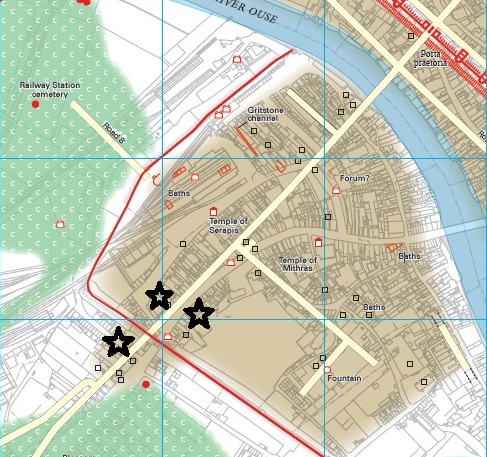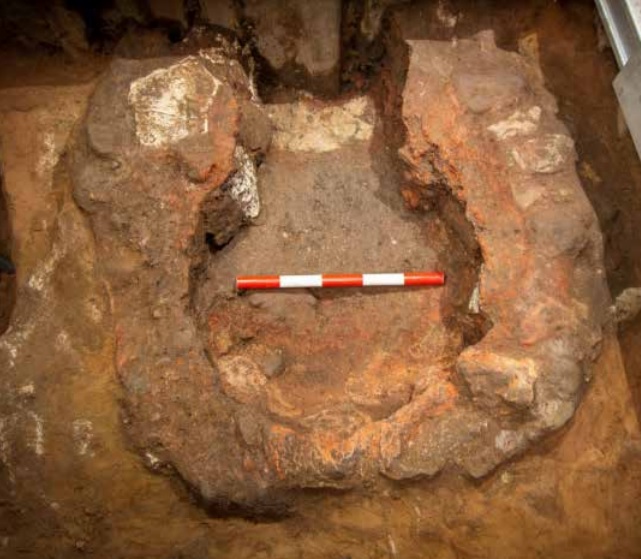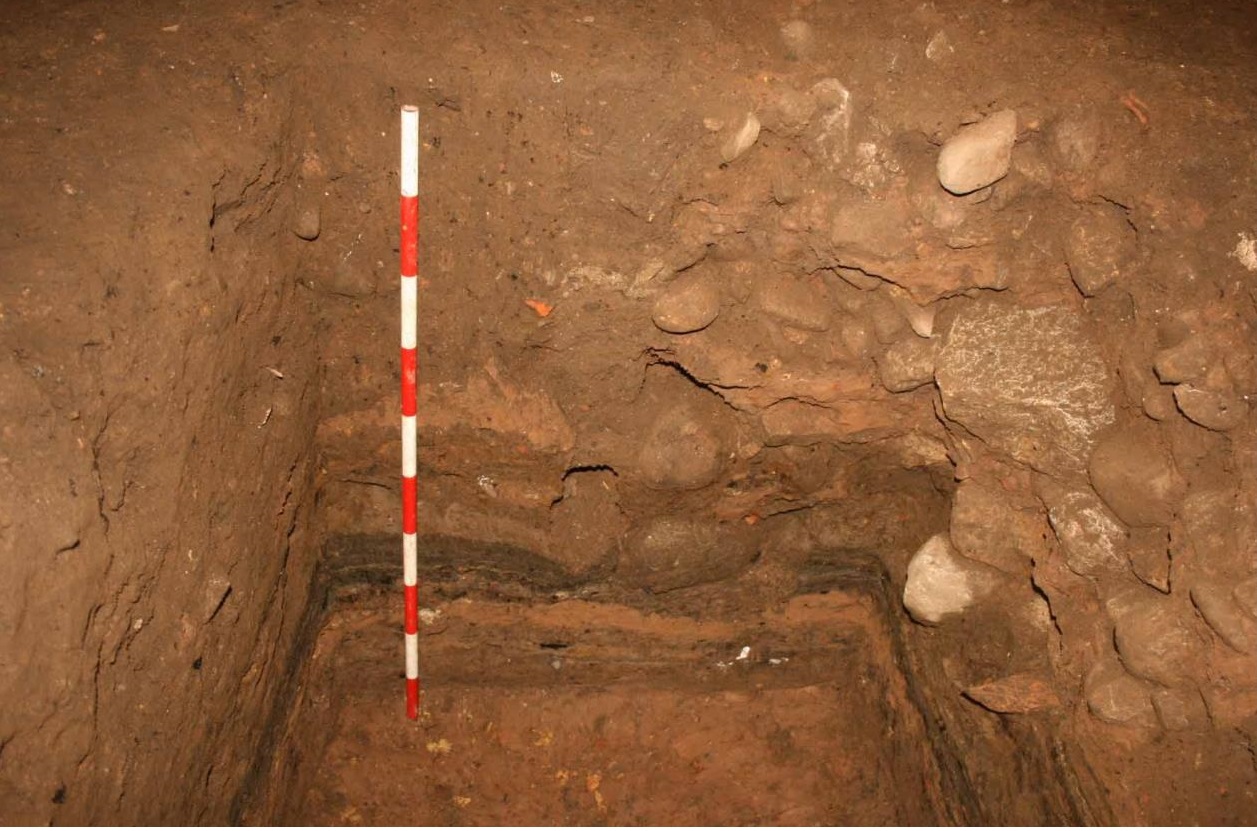Glimpses of the Roman civilian settlement in York
- Posted in:
- Roman
- Micklegate
- Queen St
- Toft Green

Intro
Roman archaeological deposits in York city centre vary in depth from 9m+ below current ground surface to less than 1m in some areas. The best archaeology is usually at depths of 2m+ protected from historic development and the majority of services.
Recent evaluation to inform planning applications on Micklegate, Toft Green and works by Openreach on Queen St have once again shown the quality and quantity of Roman archaeology surviving in the city. These sites are all located on the south side of the River Ouse within and immediately outside the Roman civil settlement on either side of Micklegate Bar.
Growth of the civilian settlement was particularly rapid in the late 2nd century, represented by the construction of new buildings and streets. In the early 3rd century York was given the honorific status of Colonia. A gradual decline in population and the deterioration of standing buildings and streets appears to have occurred from the mid-4th century. The main Roman road from Calcaria/Tadcaster to the Legionary fortress ran through the Colonia in the Micklegate area.
The modern street of Micklegate was one of the major thoroughfares into York in the Anglo-Scandinavian and medieval periods. Micklegate was of particular significance as it led to the Ouse Bridge, the only bridge over the Ouse in the medieval period.

Micklegate
Investigations at 105 Micklegate between 2018-2021 included a borehole survey, ground-penetrating radar, an evaluation trench and recently a watching brief.
In 2018 York Archaeological Trust (YAT) undertook a borehole and ground-penetrating radar survey ahead of a planning submission for the demolition of the 1930s buildings and redevelopment of the site. This enabled a basic deposit model of the site to be created showing natural sands at 3.4m below ground level overlain by Roman occupational layers.
In 2019 a trench was opened within the former car hire showroom. The Roman archaeology revealed within the trench consisted of a late 1st-2nd century small oven roughly constructed of heat-affected limestone, sandstone blocks and cobbles. The size of this oven suggests a use for serving domestic bread perhaps in a garden to the rear of a building fronting Micklegate.
Later phases of Roman activity were identified consisting of a building with three distinct floor surfaces suggesting the continuity of use over time. The building was tentatively dated to the 2nd century. A single pila was identified within the building comprising four stacked pedalis bricks – two stamped ‘LEG IX HISP’; the mark of the Ninth legion, which occupied Roman York between c. AD71 and AD120. The pila and fragments of box flue tiles suggests the presence of a hypocaust system and a building with heated walls. The building appears to have been demolished in the late 2nd or early 3rd century.

22 Toft Green
An archaeological evaluation by On-Site Archaeology (OSA) comprising two 1m deep trenches with sondages was undertaken in 2021 following a borehole survey at 22 Toft Green. The trenching revealed a complex sequence of Roman archaeological deposits including a small cobble post-setting, internal and external floor sequences and domestic dumping. Earlier structures and deposits are likely to be present here at greater depth. One of the trenches also contained a medieval oven-type structure.
Many fragments of animal bone were recovered largely dating between the 2nd and 3rd centuries. The zoo-archaeological material recovered from this evaluation is most likely all related to urban domestic refuse.
Many pieces of Roman tile and brick were also recovered. Impressions of an animal paw print was noted on one tile/brick fragment with a fingerprint impression on another.
Further archaeological work will be undertaken on this site in the near future.

Queen St
Ahead of a re-design of the York Station frontage utility companies are moving/re-aligning their services. The first stage of these works in January 2022 required Openreach to create a 3m deep access hole on Queen St close to Micklegate Bar outside of the city wall circuit. At c.1m in depth Roman in-situ archaeological deposits were revealed beneath the level of the existing cabling.
The Roman archaeology excavated comprised of domestic dumping deposits including organic layers and a series of intercutting pits. All of the deposits contained large quantities of Roman pottery. The rubbish pits/deposits were partly sealed by a layer of cobbles. A large number of amphorae sherds were recovered from the cobbles alongside a pair of calcified shoes.
The report on this work is currently in production and will be added to the HER in due course. Further works related to the Station Frontage are in progress, although most will not reach Roman levels.